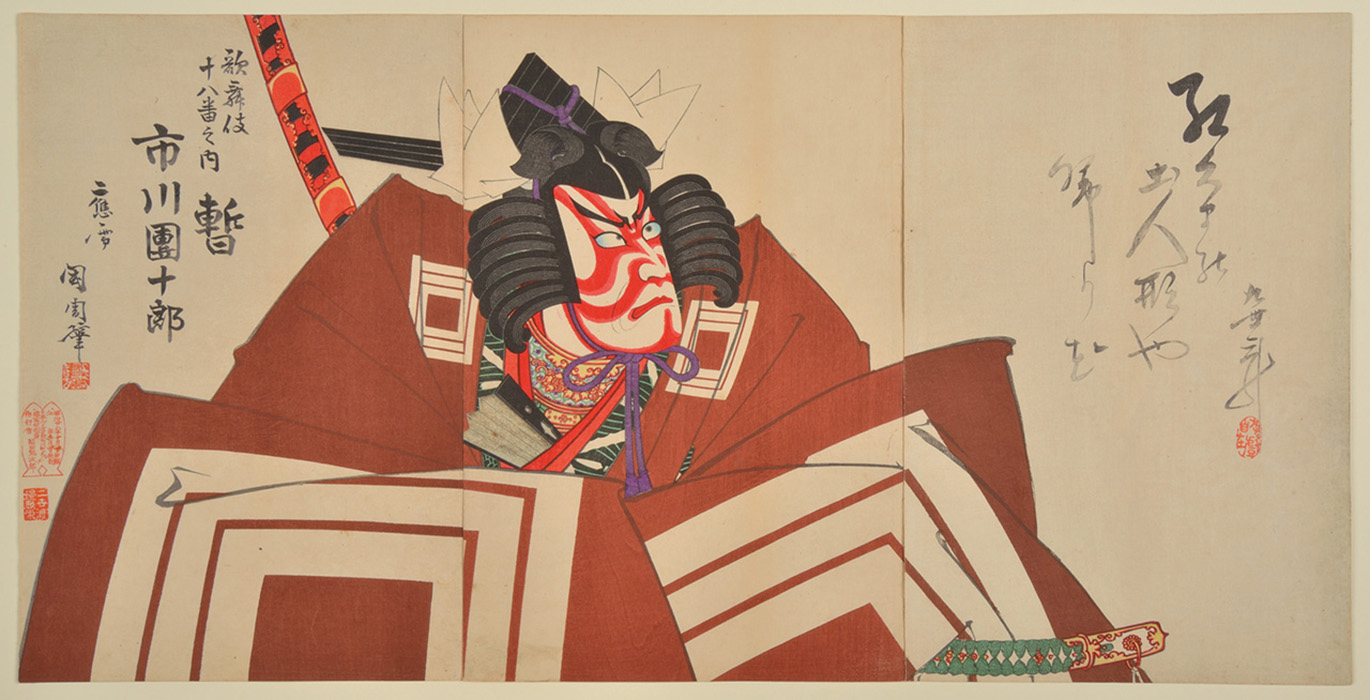News that’s fit to print
An exhibition of one of the most prolific and important print makers in 19th century Japan documents political upheaval, attitudes towards women and a modernising society
In the garden village of Port Sunlight in Wirral, the walls of the Lady Lever Art Gallery burst with colour that catches the eye and draws you in, just as the artworks it displays were meant to do when they were made. The display is the first exhibition to focus solely on Toyohara Kunichika (1835-1900), a leading Japanese printmaker of the 19th century.
The exhibition delves into the work of Kunichika, who created up to 4,000 designs throughout a career that spanned five decades.
Frank Milner, owner and collector of the prints and a guest curator for the exhibition, says: “Kunichika was a fascinating and complex artist working and responding to the enormous technological and social changes that took place in Japan during his working life.
“Within this exhibition I wanted to focus on people. The dominant image of Japan is that of the landscape. I wanted to challenge this. The aim is to widen and push further the representation of Japan in the West.”
There is a focus on his Kabuki theatre designs, which feature both images of live action plays and the actors themselves. Kabuki was a form of stylised, glamorous classical dance-drama and these prints were a central component of 19th century Japanese society. Their popularity led them to be produced by the thousands.
“These prints represent an area of fluidity and one in which mass communication has proliferated,” says Milner, explaining how the Edo (the former name for Tokyo) shown here is a modernised, industrialising one.
The three rooms move in chronological order, beginning with an introduction to Kunichika’s career and the early series of prints that he completed alongside his trainer and mentor Utagawa Kunisada. Emphasised is the importance of looking beyond the surface of the print, with the intention of eliciting a respect for the skills involved in creating these pieces.
Printmaking was a collaborative artistic enterprise including a designer, a woodblock cutter, a printer, and a publisher. There was no machinery involved. Both sides of the woodblock were used and when the printer was finished, the design was shaved off so it could be reused.
The cultural upheavals that followed the renewal of imperial rule in Japan, the Meiji Restoration of 1868, are evident in Kunichika’s later work and are displayed in the second room. Prints featuring theatrics that portrayed events such as the Satsuma rebellion of 1877 and the First Sino-Japanese War were only permitted thanks to the cultural transformation of Japan from an entirely isolated country into a modernising nation-state.
“After 1869, we see lots of red in the prints,” says Milner. “This was linked to the ‘new Japan’ and was sometimes called Meiji Red. It was a signifier of change and modernity.”
The prints from the Kabuki plays “highlighted up-to the minute issues like Western clothing, hairstyles, fashions and manners,” says David Moffat, assistant curator at National Museums Liverpool. “They also explore troubling social anxieties and conflict between the old versus the new in a rapidly modernising capital city.”
These anxieties are particularly prevalent in Kunichika’s prints concerning real women. In the last room of the exhibition are two prints that depict a play that enacted the scandal surrounding the trial of the last woman to be publicly beheaded in Japan.
Takahashi Oden, in mercilessly slitting her husband’s throat and abandoning him for her lover, encapsulated the fears that women would run amok thanks to their newfound, modern freedoms. Social upheaval stimulated this idea of “poisonous women”, much as it did in Britain following the industrial revolution. This narrative was upheld and encouraged by Kabuki theatre through the propagation of the stereotype of the immoral, dangerous and promiscuous woman.
On the selection of prints for the exhibition, Milner says: “It was very difficult to choose. What you do exhibit is just as important as what you don’t. My intention was to provide a cohesive view of Kunichika’s individual artistic style”.
This is the only exhibition outside Japan to solely focus on Kunichika. Having lived through the Ukiyo – Edo’s so-called Floating World period of stylishness, extravagance, hedonism, and transgression – and the subsequent transformation into a rapidly modernising state, he was equipped to translate the great shifts that Japan underwent in the 19th century into art that still influences Japanese comic media today.
Kunichika: Japanese Prints is at Lady Lever Art Gallery until 4 September (liverpoolmuseums.org.uk)

Leave a reply
Your email address will not be published.